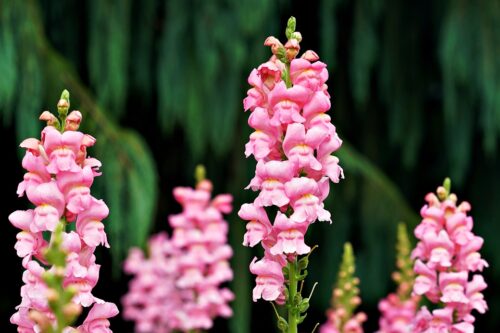Find Are Snapdragons Annuals or Perennials and solve your confusion for a colorful splash of blooms in your garden.
The common question often comes to mind: Are Snapdragons Annuals or Perennials? Read on to find an interesting yet contradictory answer in this post.
Snapdragons bring a pop of color to any garden. Whether grown in masses or trailing from hanging baskets, snapdragons spread a long, lasting, colorful vibe. They are especially grown in cottage gardens and children’s gardens because the dragon’s mouth snaps open and shut.
Are Snapdragons Annuals or Perennials?

Well, snapdragons can be both annual and perennial. Some of these varieties are true annuals, which means they thrive, bloom, set seeds, and die in a single growing season. Other types of snapdragons are short-living perennials and hardy in zones 7-11; they are generally grown as annuals.
Some snapdragon varieties are famous for handling winter temperatures in zones 5-6. In most regions, the seeds of snapdragons can withstand low winter temperatures, new plants can be grown from seeds during spring, and make the plant appear to come back again like a perennial.
Perennial and annual snapdragon varieties don’t have dissimilarities. Both can grow from 6-36 inches tall, flower for longer durations, and feature either classic snapdragon flowers or azalea-like blooms. They also both grow easily from seed, except for hybrid varieties.
Because perennial snapdragons are short-living, they are often grown as annuals and replanted each year. Nurseries can add to the confusion by labeling them as “half-hardy annuals” or “tender perennials.” The lifespan of snapdragons as perennials varies by variety and location, but on average, short-lived perennials typically live around three years.
Planting Snapdragon: Annual vs. Perennial
Many gardeners prefer to plant snapdragons annually for the assurance of long blooming periods each year. If perennial varieties return or the seeds of last year germinate, it simply means you will have more flowers in the garden.
It has been considered that snapdragons are cool-season plants. Whereas cool temperature and too much heat both can kill snapdragons. In zone 9 or above (Southern climates) they are often planted in fall to have vivid flowers across the winter. Coming to northern temperatures, the snapdragon plants or seeds are grown in spring after the threat of frost has gone. In zones 7-9, perennial snapdragons work well.
Perennial:
- In zones. 7-10, short-living perennial snapdragon variety like Eternal offer long flowering season of colorful blooms over white-green leaves.
- You can go with Spanish snapdragons that are popular for being hardy in zones 5-8.
- Autumn Dragon series and Snap Daddy are popular perennial snapdragons.
Annual:
- Choose the Sonnet, Rocket, or Liberty series for dependable, long-flowering annual snapdragon varieties.
- Some other annuals comprise Candy Showers, Plum Blossom, and the Solstice Mix.
- Some hybrid annual varieties like Madame Butterfly or Bright Butterflies offer azalea-like flowers.



